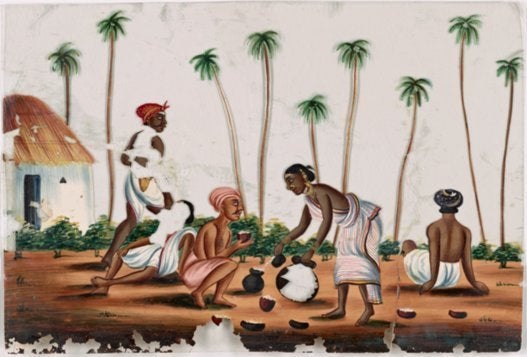
On 16 May 2014, the stock markets caroused wildly, expecting an exhilarating acceleration on a glistening expressway as the harbingers of "acchhe din", the BJP and Narendra Modi, overwhelmed political adversaries.
Two years later, the slippery Sensex has reached rock-bottom , even crashing below the much-maligned "dismal last two years of UPA". Foreign institutional investors are net-sellers in high-profile equities. Evidently, the syrupy honeymoon has been abruptly terminated. Foreign investors perpetually singing Mr Modi's hosannas are looking suitably gobsmacked, as BJP's self-congratulatory "highest GDP growing country in the world" is seen at best as a sloppy attempt at statistical skulduggery. No one is convinced by the massaging of the numbers. As the celebrated annual festivity of "the Budget" draws closer, expect some deadly spins.
The Indian economy has three classes of people, the haves, the have nots and the have yachts. The Modi Sarkar works singularly for the latter.
India has myriad, complex problems, and there is no single silver bullet for them. Mr Modi may have promised his personal Midas touch, but the chickens are now coming home to roost. The spasmodic outbursts of anti-minority salami-tactics by hardliner hot-heads of the BJP have accentuated divides within the whole political ecosystem. The economy too will pay the price. It is inevitable.
One is flabbergasted that the Modi Sarkar has so callously neglected the agricultural sector, experiencing its lowest growth in years at an abject 0.2% during 2014-15. Farmer suicides in Maharashtra alone during last year have crossed 3200. As many as 302 out of India's 676 districts are facing drought. Rural wages which had shown rapid growth in preceding years are down to a miserable 3.8% growth rate in 2015.Sales of tractors (20%) and motorcycles (4%) which epitomise rural market buoyancy are down in the first-half of fiscal year 2015-16. And yet, the current government appears oblivious to the woebegone conditions that have ravaged the farming community.
After publicly mocking the MGNREGA Scheme in Parliament, in a dramatic U-turn Mr Modi has suddenly discovered the salutary attributes in UPA's landmark scheme which is internationally accepted as the world's largest social security scheme with huge positive ramifications for the disadvantaged sector. Fact is, 44% of farmers need MNREGA as a source of supplementary income. This brazen, belated recognition is a manifestation of the NDA's incorrigible myopia; it has allowed political one-upmanship to distract from compelling national imperatives.
India's manufacturing activity touched a stunning nadir -- a 25-month low in November -- which makes a mockery of the much-hyped Make in India slogan.
The Indian economy has three classes of people, the haves, the have nots and the have yachts. The Modi Sarkar works singularly for the latter. We are confronted with some irrefutable hard realities. India's banking system is suffering from astronomical bad debts with some estimating that stressed assets could be as high as 20% of the overall credit portfolio. This 'House of Debt' is now threatening to derail the Indian economy as most of the credit defaulters who are not even able to service their interest payments belong to the celebrated crony capitalist club that the government serenades. For long, RBI Governor Mr. Raghuram Rajan was castigated for not reducing the repo rate which Finance Ministry apparatchiks believed was the sole reason for low private sector investment and sluggish economic growth. Since, the RBI has reduced rates at incremental intervention up to 125 basis points. But it has had negligible impact on new investments, because the public-sector banking system is cash-capital strapped. NPAs alone have risen by as much as 11% in the last quarter. And the government is somnambulating.
India's manufacturing activity touched a stunning nadir -- a 25-month low in November -- which makes a mockery of the much-hyped Make in India slogan. The core sector which is a barometer for infrastructural growth is stagnating at 1% growth. There is not even a sliver of silver lining visible. The latest data from quarterly corporate earnings reports show disconcerting symptoms; corporate top line revenue as well as profits have either flattened or gone into negative.
Bottom-line, the Modi Sarkar is a hamstrung government that is high on political arrogance, low on intelligent, prompt decision-making.
The BJP had promised 25 million new jobs per year, and one assumes that this optimistic projection had some reasonable scientific basis. So far the net job accretion is a mere few thousands, an embarrassingly low figure. India's demographic dividend has been reduced to a non-performing liability, a virtual demographic nightmare. India needs labour-absorbing farm technologies to create jobs. Manufacturing worldwide has become capital intensive with extended use of robots, artificial intelligence, Big Data, drones, nanotechnology etc. But we are obsessed with grandiose sloganeering.
One of the biggest challenges in India is rising income inequality. A mere 1% of Indians own 53% of the national wealth. The policy priorities that can reverse the deepening divide which can have long-term deleterious consequences are greater budgetary allocations to education, health and training. But these are singularly missing.
Bottom-line, the Modi Sarkar is a hamstrung government that is high on political arrogance, low on intelligent, prompt decision-making. You cannot make an omelette without breaking eggs. Hence, India finds itself imperceptibly sinking into a quagmire. That the Indian economy should be so grossly under-leveraged despite the global tailwind of ridiculously low oil-prices (one-fourth of what prevailed just two years ago) is a tragic commentary on lost opportunities.
India is going through a déjà vu phase, the return of the dubious, deceptive theme of the Vajpayee NDA Government: "India Shining". What we are witnessing now is Modi's "India Shining- Part II". Carpe diem!
The author is National Spokesperson of the Indian National Congress party. The views are his own.



Contact HuffPost India
Also see on HuffPost:
